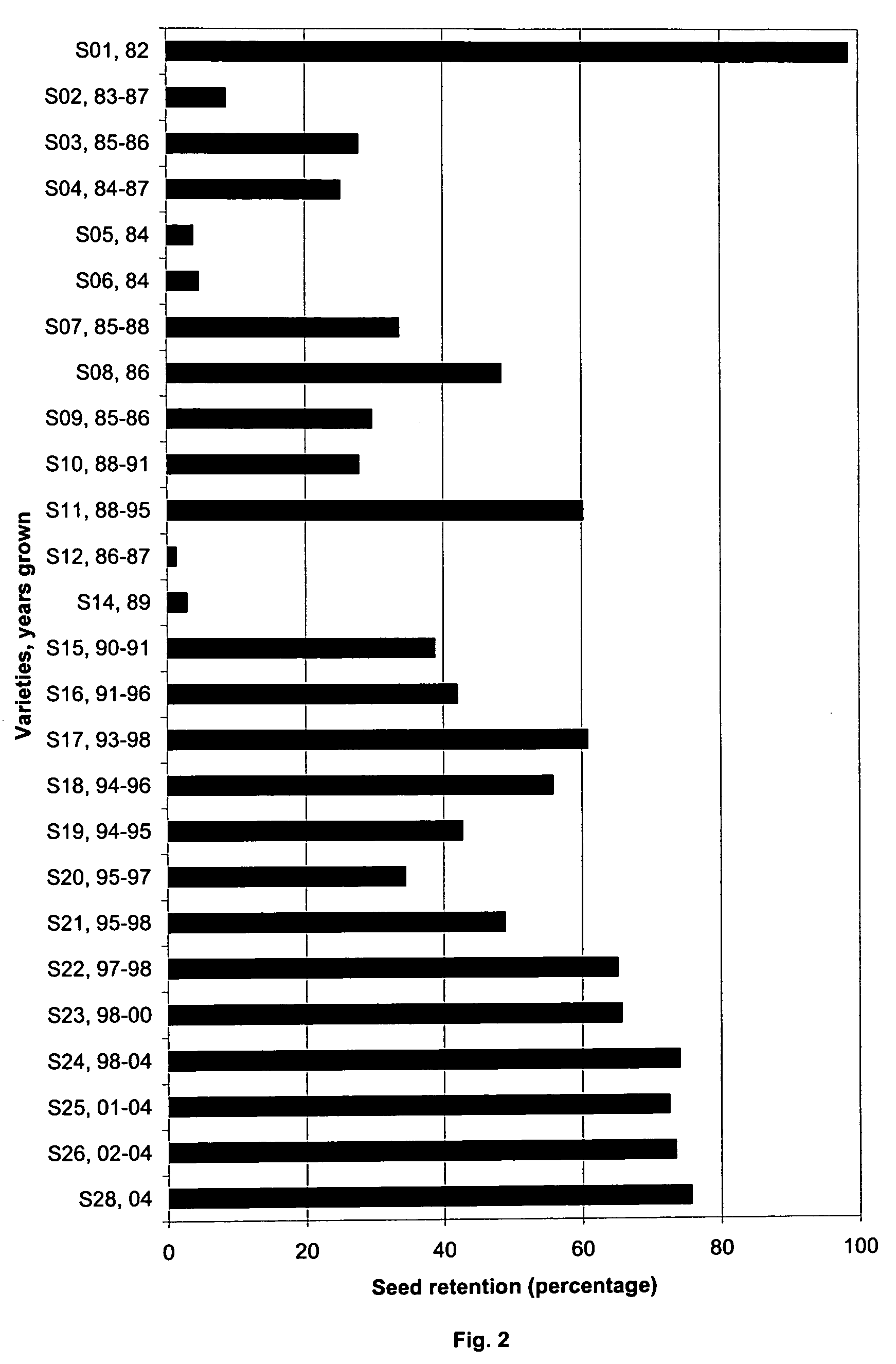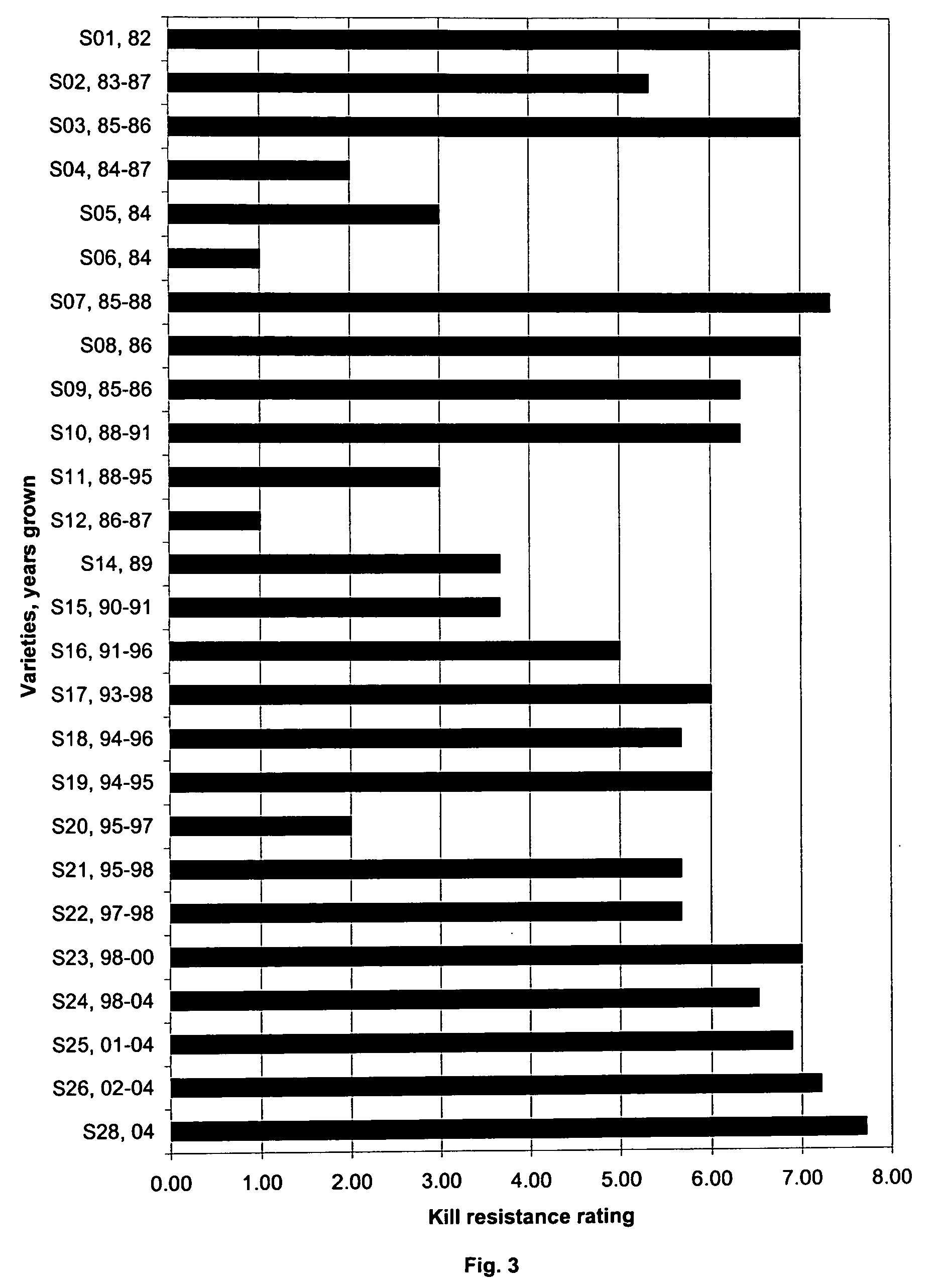Non-dehiscent sesame variety S28
a sesame seed pod and non-dehiscence technology, applied in the field of non-dehiscence sesame seeds, can solve the problems of affecting the acceptance of sesame, the dehiscence of the sesame seed pod was the principal obstacle to the widespread acceptance of sesame, and the importance of mechanization
- Summary
- Abstract
- Description
- Claims
- Application Information
AI Technical Summary
Benefits of technology
Problems solved by technology
Method used
Image
Examples
Embodiment Construction
[0029]Sesame cultivar Sesaco 28 (hereinafter “S28”) is a non-dehiscent sesame variety having superior characteristics which make it a commercially suitable sesame line. S28 exhibits non-dehiscence as defined in U.S. Pat. No. 6,100,452, the teachings of which are incorporated herein by reference, making it suitable for mechanized harvesting. In addition, S28 has large seed size which is desirable for processors, comparable shatter resistance, earlier maturity which allows a wider geographical range, and improved resistance against common fungal diseases.
[0030]The recommended geographical area for S28 is from South Texas at the Rio Grande to northern Oklahoma and from east Texas westward to elevations below 1,000 meters. S28 has not been tested in other states, but it is projected that it would perform well in New Mexico, Arizona, and California. S28 has not been exposed to the sesame diseases that have been reported east of Texas.
[0031]Sesaco used the pedigree method of plant breedin...
PUM
| Property | Measurement | Unit |
|---|---|---|
| height | aaaaa | aaaaa |
| elevations | aaaaa | aaaaa |
| temperatures | aaaaa | aaaaa |
Abstract
Description
Claims
Application Information
 Login to View More
Login to View More - R&D
- Intellectual Property
- Life Sciences
- Materials
- Tech Scout
- Unparalleled Data Quality
- Higher Quality Content
- 60% Fewer Hallucinations
Browse by: Latest US Patents, China's latest patents, Technical Efficacy Thesaurus, Application Domain, Technology Topic, Popular Technical Reports.
© 2025 PatSnap. All rights reserved.Legal|Privacy policy|Modern Slavery Act Transparency Statement|Sitemap|About US| Contact US: help@patsnap.com



